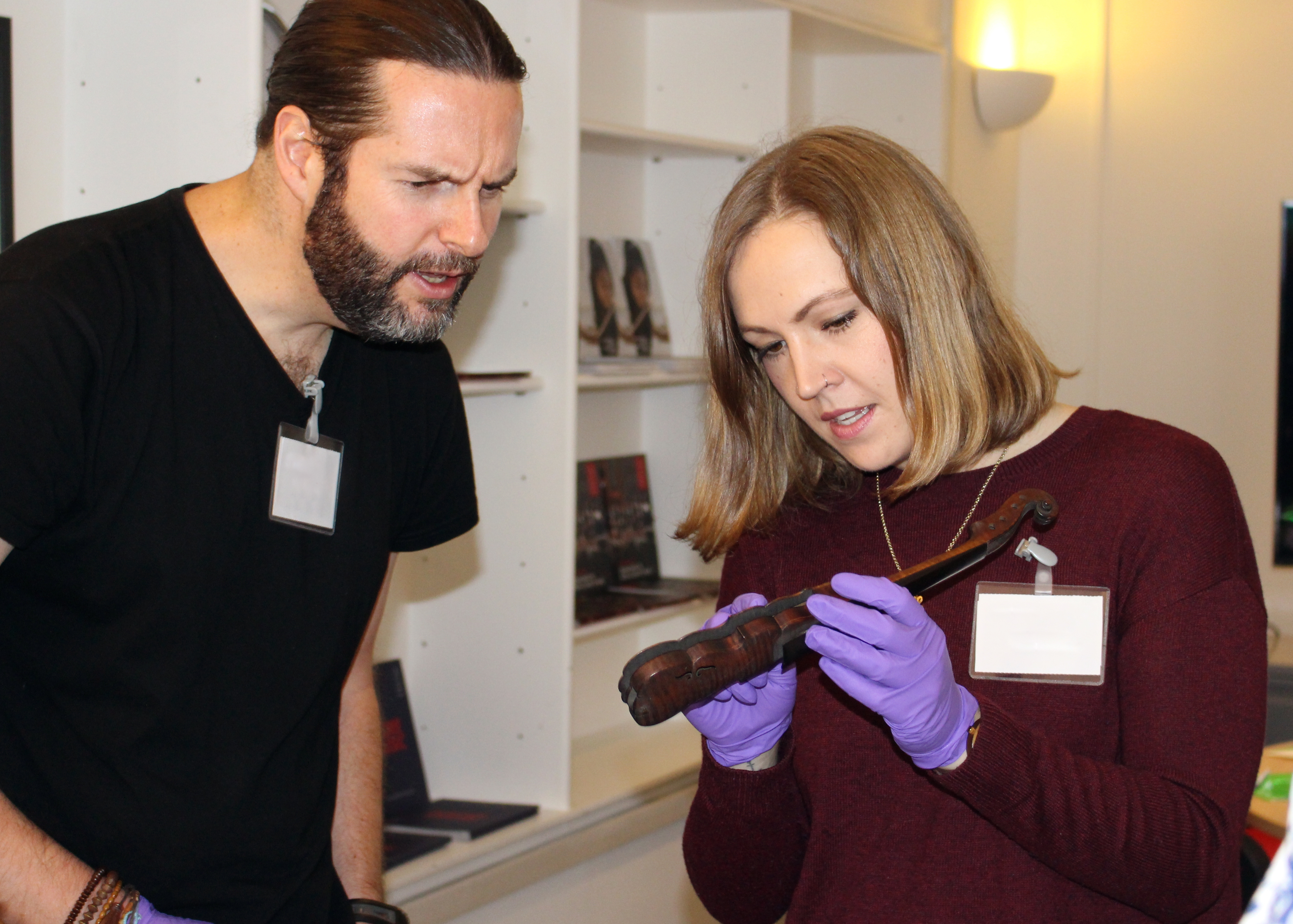Museum Blog: The experience of handling museum objects
Thursday 3 January 2019
It is quite rare for museum visitors to have the opportunity to touch real artefacts, but this experience is becoming ever more prevalent in museums today. Here at the RCM we are privileged to hold playable instruments in our collection, and we frequently allow supervised access to them for public concerts and events. However, the remainder of the collections tend to stay behind glass and handled by expert hands only.
After attending a number of museum conferences and workshops on the subject, I have become persuaded that sensory experiences are a really important part of learning for people of all ages. Allowing hands-on access is something I have been thinking about offering school groups when we reopen our museum, and I wanted to explore this with our Teacher Ambassadors at our annual Learning Day at the RCM.
The purpose of the Learning Day is to introduce local school teachers to our collections and examine the potential ways we can use them to support and extend curriculum learning. In November, our small group of Teacher Ambassadors gathered together, and we brought some of our collections out of storage for a handling session. We wanted to give them an opportunity to explore our musical heritage in a new way, and use the experience to fuel discussions about the value of handling sessions for children of different ages, and inform the way we deliver these activities in the future.
The instruments we selected have things in common but look very different from each other.
[gallery]
We decided not to give the teachers any information about the instruments prior to the session, just guidance on how to touch and handle them with care. As they examined the objects, we noticed them observe, investigate and compare aspects like the size, shape, material, decoration, sound and even hazard a guess at the social context.
How did they find the experience?
In their feedback at the end of the day, all our teachers told us that getting hands-on with precious objects was the highlight of the day. As the handling session progressed, they uncovered new, sensory layers to explore. Do the instruments still make sound? And even, what do they smell like? Several teachers felt bold enough to pluck strings or even bow them, which made them think about where the objects might have been played and by whom.
There followed discussions about the experience of handling museum artefacts themselves versus handling replicas, another common practice in museums. Handling the real thing often gives visitors that exciting, awe-inspiring feeling that they are holding a piece of history in their hands. However our teachers also recognised that children learn a lot by being able to take something apart, use it and test it. This is not always possible with real thing if we want to continue to preserve the object! Our Teacher Ambassadors felt that both experiences had merit for children and that they should be enabled to do both.
Objects in museum collections survive in various states. Some remain completely intact and others have lost less durable parts of their structure over time. One of the instruments we laid out on the table was a pochette; a tiny violin designed to fit into the pocket of seventeenth century dancing masters who travelled between noble families teaching the latest dance steps. This pochette survives without pegs and strings, and has a curious gap in the back.
[image2]
As we didn’t give any information about the instruments beforehand, many teachers were misled into believing it might be a percussion instrument. The body looked similar to that of string instrument from the violin family (with a neck and curved body), but with no strings or pegs visible they found it difficult to draw conclusions. I found this surprising, as I hadn’t thought that the lack of strings and pegs would affect their ability to make a visual connection, but in hindsight I realise that having prior knowledge about pochettes had meant that I hadn’t put myself in their shoes when choosing the instrument.
In fact, this pochette is particularly special. The gap at the back is actually a hidden compartment used to store a fan for cooling down the performer after an active dancing lesson! It would have looked similar to this pochette in the collections of the Musée de la Musique in Paris.
[image3]
Later in the day, teachers were able to try a different kind of handling session with the Primary Schools Officer at the London Transport Museum, who also brought in a few handling objects. Again they were given no information about the objects at all beforehand and, in groups, were asked to pass the objects around using prompt phrases such as ‘I notice’, ‘I like’ and ‘I wonder’. Teachers said they found the ‘I notice’ part easy at first, but more stressful when you run out of things to say about an object. However, using ‘I like’ began to give the object some personal significance, and ‘I wonder’ helped to spark their imaginations about the object, its life and purpose.
Although just a simple experiment, this experience showed me that there is a difference between absorbing information that has been transmitted to a person (by labels) and allowing people to use their senses and existing knowledge to construct theories or learn by playing an active role in the process. The handling experience often makes space for a deeper level of learning that becomes personal and is more likely to stay with a person after the experience is over.
I am now looking carefully at our collections to see which objects lend themselves to a handling experience, and what stories people could uncover. Watch this space!
Lydia Baldwin
Museum Learning & Participation Officer
[image1]








